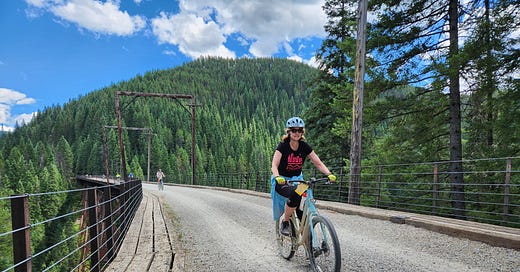The Route of the Hiawatha: A Great American Rail Trail
IDAHO: This downhill ride crosses 7 trestles and enters 10 tunnels through the Bitterroot Mountains.
Keep reading with a 7-day free trial
Subscribe to Why We Ride: The Destination Cycling Guide to keep reading this post and get 7 days of free access to the full post archives.




